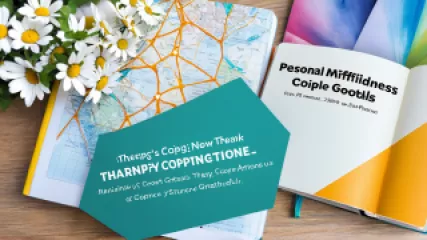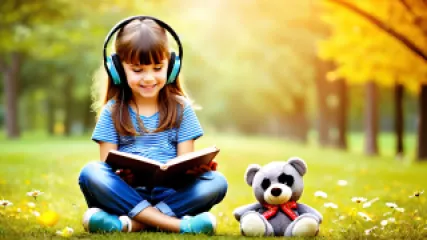Obsessive Compulsive Disorder
Obsessive-Compulsive Disorder (OCD) affects millions of people worldwide, causing distressing thoughts and repetitive behaviors that can significantly impact daily life. Fortunately, advancements in technology have made it easier for individuals to access mental health resources, including online therapy for OCD. In this article, we will explore the top 10 online OCD treatment options available today. These platforms offer a range of therapeutic approaches, expert guidance, and convenient accessibility to help individuals manage their symptoms and improve their quality of life.
1. BetterHelp
BetterHelp is a popular online therapy platform that offers a variety of mental health services, including treatment for OCD. With BetterHelp, you can connect with licensed therapists through text, audio, or video sessions. Their therapists specialize in evidence-based treatments such as Cognitive Behavioral Therapy (CBT), which is highly effective for OCD. BetterHelp allows you to receive personalized treatment from the comfort of your own home, making it a convenient option for those with busy schedules or limited access to traditional therapy.
2. Talkspace
Talkspace is another well-known online therapy platform that provides support for individuals with OCD. They offer unlimited messaging therapy, allowing you to communicate with your therapist anytime, anywhere. Talkspace also offers video sessions, giving you the option to have face-to-face interactions with your therapist. Their therapists are experienced in treating OCD and can guide you through evidence-based techniques to manage your symptoms effectively.
3. NOCD
NOCD is a specialized platform that focuses specifically on OCD treatment. They provide live video therapy sessions with licensed therapists who specialize in Exposure and Response Prevention (ERP), a gold-standard treatment for OCD. NOCD's therapists work closely with you to develop personalized treatment plans and provide support throughout your recovery journey. The platform also offers useful tools, such as a mobile app that allows you to track your progress and manage your OCD symptoms more effectively.
4. Amwell
Amwell is an online healthcare provider that offers virtual therapy services, including treatment for OCD. They have a network of licensed therapists who can provide evidence-based treatments to help you manage your symptoms. Amwell's platform is user-friendly, and they offer flexible appointment scheduling to accommodate your needs. With Amwell, you can receive professional support for your OCD without leaving your home.
5. Pride Counseling
Pride Counseling is an online therapy platform dedicated to serving the LGBTQ+ community. They offer therapy for various mental health concerns, including OCD. Pride Counseling provides access to licensed therapists who are knowledgeable about the unique challenges faced by individuals within the LGBTQ+ community. Their therapists can provide effective treatment for OCD while ensuring a safe and inclusive environment.
6. 7 Cups
7 Cups is a platform that offers online therapy and emotional support through trained listeners and licensed therapists. While they do not specialize solely in OCD treatment, they can still provide valuable support for individuals with OCD. 7 Cups offers affordable options, including free chat rooms where you can connect with others who understand what you're going through. Additionally, they provide access to licensed therapists who can guide you through evidence-based techniques for managing OCD symptoms.
7. Online-Therapy.com
Online-Therapy.com is an online platform that offers a comprehensive approach to treating OCD. Their program combines CBT techniques, interactive worksheets, and messaging therapy to help individuals overcome their OCD symptoms. Online-Therapy.com provides a structured treatment plan tailored to your specific needs. With their user-friendly platform, you can work at your own pace and receive guidance from licensed therapists along the way.
8. Regain
Regain specializes in online therapy for couples, but they also offer individual therapy for a range of mental health conditions, including OCD. If OCD affects your relationships, Regain can provide support for both you and your partner. Their licensed therapists understand how OCD can impact interpersonal dynamics and can help you navigate these challenges effectively.
9. MDLive
MDLive is an online healthcare provider that offers virtual therapy services, including treatment for OCD. They have a network of licensed therapists who can provide evidence-based treatments to help you manage your symptoms. With MDLive, you can access therapy from the comfort of your own home and receive the support you need to overcome OCD.
10. ThriveTalk
ThriveTalk is an online therapy platform that offers confidential and convenient therapy sessions for individuals experiencing OCD. They provide a range of therapeutic approaches, including CBT, to help you manage your symptoms effectively. ThriveTalk's licensed therapists are committed to providing personalized care and support throughout your treatment journey.
In conclusion, online therapy provides a convenient and accessible option for individuals seeking treatment for OCD. The top 10 online OCD treatment options mentioned in this article offer various therapeutic approaches, expert guidance, and flexible scheduling to accommodate your needs. Whether you prefer text-based therapy, video sessions, or specialized OCD treatment programs, these platforms can help you manage your symptoms and improve your overall well-being. Remember, seeking professional help is an important step towards managing OCD, and with these online resources, support is just a few clicks away.














